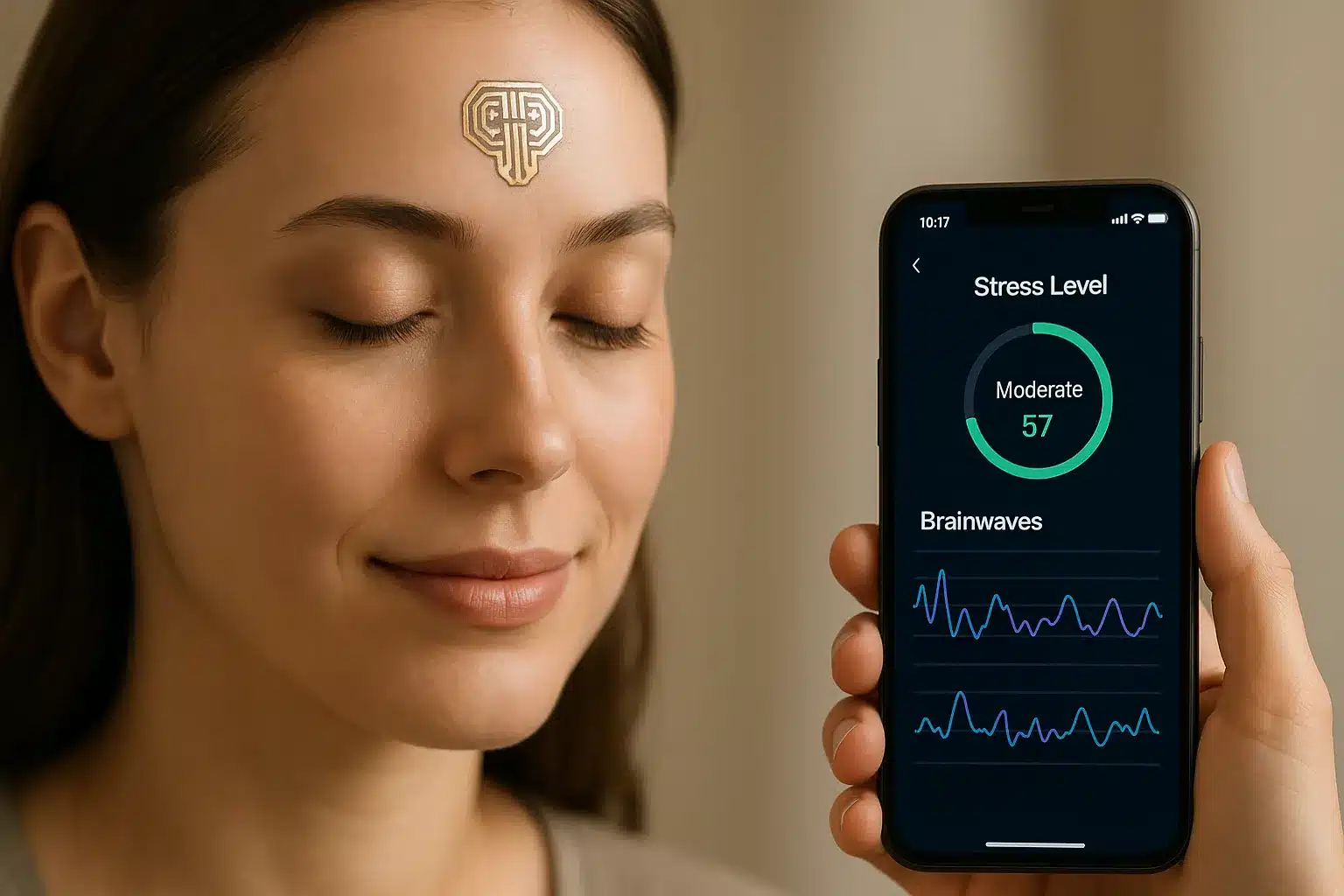Researchers at the University of Texas at Austin have unveiled a game-changing ultra-thin wireless “e‑tattoo” designed to measure brain activity and eye movements from the forehead, providing real-time assessments of mental stress and cognitive workload. This non‑invasive device, resembling a temporary tattoo, marks a major leap in user-friendly neurotechnology—and offers promising consumer applications for focus, meditation, and productivity.
The device is built around a flexible EEG sensor system that adheres to the skin with an adhesive patch—no gels or bulky headsets required. In lab tests using memorization drills and task-switching exercises, the e‑tattoo accurately tracked mental load through high-frequency synchrony patterns, enabling instantaneous stress response detection. Researchers Nanshu Lu and Luis Sentis emphasized the potential for applying this tech in high-stress professions—pilots, air-traffic controllers—but also see broader use cases in everyday life, such as monitoring meditation effectiveness or work concentration.businessinsider.com
Unlike conventional wearables—smartwatches or rings—the e‑tattoo directly captures neural signals and ocular metrics, offering a richer data source for cognitive-state insights. Lu notes that initial versions previously monitored cardiac and sweat data, but this iteration represents the first step toward truly wearable brainwave tracking—and may eventually integrate machine learning for real-time feedback and personal mental health monitoring.
From a cultural and consumer standpoint, this development aligns with growing demand for wellness tools that go beyond step-counting and heart rate tracking. Today’s well-being consumers want quantified mental clarity, personalized insights into focus and relaxation, and instant biofeedback during work, meditation, or gaming.
Of course, questions remain around data privacy and accuracy: what happens with raw neural data? Will users own their information, or will it feed into cloud‑based systems? Researchers suggest GDPR-like protections for neural data (often called “brain data”) and transparent opt-in protocols before broad adoption.
Before reaching consumers, the e‑tattoo must overcome technological hurdles: signal stability over sweat, adhesive durability, and regulatory approval (EEG is still regulated as a medical device in many regions). Commercial versions could debut as productivity-enhancing upgrades for headset-equipped workers or gamers—but may also invite scrutiny if applied in high-stakes roles without oversight.
Source: Business Insider
Related
Source link
